![]()
Just last month, a young govie asked me for some tips on how to be a better writer.
“Read a lot, write a lot,” I said, almost instantly — advice lifted word-for-word from Stephen King’s book, “On Writing.”
Now, before you snort derisively or make a nasty finger gesture at the GovLoop emblem on your screen, let me say this: Even if you DON’T LIKE Stephen King, if you are a certified, card-carrying govie and have any interest at all in putting sentences together that other people might lay eyes on, by God, you should read this book.
In fact, “On Writing” is one of and handful of books I think every govie should have on his or her bookshelf, tablet or e-reader.
The following is a list and brief description of those books — the “top five” every government communicator should not just read, but own. A few on this list may surprise you as much as (or more than) the Stephen King:
(1) ‘On Writing’ By Stephen King
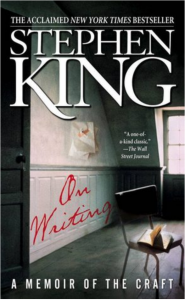 Why It’s So Awesome: “On Writing” is part memoir, part how-to book. It combines wonderful storytelling with brass-tacks, easy-to-understand, step-by-step instructions that will help you become a better writer.
Why It’s So Awesome: “On Writing” is part memoir, part how-to book. It combines wonderful storytelling with brass-tacks, easy-to-understand, step-by-step instructions that will help you become a better writer.
I re-read this book once every two or three years to recharge my writing batteries, and I consult it often when I need to find inspiration … or a pithy piece of advice.
Yes, “On Writing” is built for fiction writers, but as I said in last week’s GovLoop blog, we all need to become better storytellers. I guarantee you’ll see this book’s value in the day-to-day application of your work.
Excerpt: “I’m not asking you to come [ to the blank page ] reverently or unquestioningly; I’m not asking you to be politically correct or cast aside your sense of humor (please God you have one). This isn’t a popularity contest, it’s not the moral Olympics, and it’s not church. But it’s writing, damn it, not washing the car or putting on eyeliner. If you can take it seriously, we can do business. If you can’t or won’t, it’s time for you to close the book and do something else.”
(2) ‘Inside Reporting’ by Tim Harrower
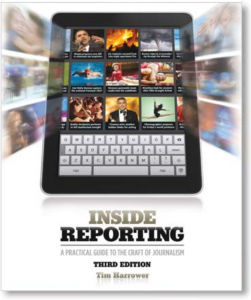 Why It’s So Awesome: The series of GovLoop blogs you’re reading now has a theme: How a dash of journalism training can help you be a better government communicator. “Inside Reporting” is a one-stop shop for all things journalism — an invaluable reference and the textbook of choice at the best journalism schools in the world.
Why It’s So Awesome: The series of GovLoop blogs you’re reading now has a theme: How a dash of journalism training can help you be a better government communicator. “Inside Reporting” is a one-stop shop for all things journalism — an invaluable reference and the textbook of choice at the best journalism schools in the world.
Check out Page 194 (in my edition, anyway) — “Writing a News Release.” It’s got everything you need to know, succinctly and brilliantly packaged, from “Why Issue a News Release” to “What a Typical News Release Looks Like” to “10 Tips For Writing Better News Releases.”
It has a “Morgue” with 128 pages chock full o’ great leads and writing examples.
It’s got 1,001 writing tips, reporting basics, story planning how-to’s and all kinds of stuff about online reporting, from blogging to writing for the web to user participation to audience engagement. Sound familiar?
Excerpt: “Most authors write the text first, then hand off the manuscript to editors and designers who add photos, illustrations and fancy type. But for this book, I designed each page as a I wrote it. Or, rather, I wrote each page as I designed it. Whichever.
“It’s an unusual way to produce a book. … But Ideally it will show you how challenging and rewarding and important and seriously cool journalism is.”
(3) ‘The Newspaper Designer’s Handbook’ by Tim Harrower
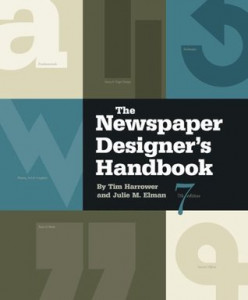 Why It’s So Awesome: I’m not exaggerating when I say “The Newspaper Designer’s Handbook” will instantly improve anything you do in print, PDF or digital form. Flyers, brochures, e-newsletters, online magazines, post cards, info graphics, digital page-turning animation, whatever — Harrower will help you “Think Like a Reader” and become a superior visual storyteller.
Why It’s So Awesome: I’m not exaggerating when I say “The Newspaper Designer’s Handbook” will instantly improve anything you do in print, PDF or digital form. Flyers, brochures, e-newsletters, online magazines, post cards, info graphics, digital page-turning animation, whatever — Harrower will help you “Think Like a Reader” and become a superior visual storyteller.
If you like Steve Ressler’s blogs on GovLoop, you’ll love “The Newspaper Designer’s Handbook.” It’s smart, succinct, brilliantly constructed and super-valuable.
Is it really a “writing” book? I think it is. The excerpt below explains why.
Excerpt: “Today’s readers are visual. Impatient. Easily bored. Readers absorb data in a variety of ways: through words, photos, charts, maps, diagrams. They want news packaged in a sort of ‘information mosaic,’ a combination of text, data and images that approaches complex issues from fresh new angles.”
(4) ‘The Associated Press Stylebook and Briefing on Media Law’ By The Associated Press
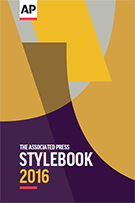 Why It’s So Awesome: I’ve got so much to say about the “Associated Press Stylebook,” I’m going to save it for the next blog. If you don’t already have one, go get a hard copy or sign up for the online edition. All I’ll say right now is that if you’re not familiar with AP style, you’d better get familiar with it — pronto.
Why It’s So Awesome: I’ve got so much to say about the “Associated Press Stylebook,” I’m going to save it for the next blog. If you don’t already have one, go get a hard copy or sign up for the online edition. All I’ll say right now is that if you’re not familiar with AP style, you’d better get familiar with it — pronto.
The AP Stylebook is widely used as a writing and editing reference in newsrooms, classrooms and corporate offices worldwide.
Excerpt: “This updated and revised version of the Associated Press Stylebook has been organized like a dictionary. Need the acronym for a government agency? Look under the agency’s name. Should you capitalize a word? Check the word itself or the capitalization entry. What’s the format for baseball boxes? See baseball.”
(5) ‘The Elements of Style’ by William Strunk and E.B. White
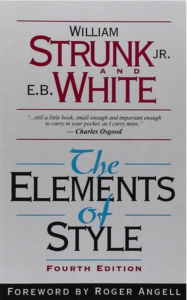 Why It’s So Awesome: I’m saving the shortest book — and probably the most important on this or any other writer’s list — for last.
Why It’s So Awesome: I’m saving the shortest book — and probably the most important on this or any other writer’s list — for last.
Owning “The Elements of Style” is very close to falling under the category of “duh.” It’s simply the undisputed, all-time-great, must-have, must-read little book on writing.
Coming full circle, I’ll answer the “Why It’s So Awesome” question with another quote from “On Writing,” but I’ll abbreviate one word so that it can appear in the family-friendly confines of GovLoop:
“Most books about writing are filled with (B.S.). One notable exception to the (B.S.) rule is ‘The Elements of Style’, by William Strunk Jr. and E.B. White. There is little or no detectable (B.S.) in that book. … I’ll tell you right now that every aspiring writer should read ‘The Elements of Style.’ ”
I love this little book, and I think you will, too. The Table of Contents of “The Elements of Style” alone provides the best possible advice on how to be a better writer and follows Strunk & White’s maxim to “omit needless words.”
Excerpt: (From the Table of Contents!)
- Use the active voice.
- Write in a way that comes naturally.
- Write with nouns and verbs.
- Avoid the use of qualifiers.
- Revise and rewrite.
Bonus Recommendation: “Adventures in the Screen Trade” by William Goldman — I left “Adventures in the Screen Trade” off the top-five list only because it’s so focused on screenwriting, and it’s a little out of date, even in its more-recent editions. But if you want to learn more about storytelling, script writing, editing and maybe enhance your video storytelling, give this one a look-see. It’s a great read.
Read More
Read The ‘Journalism.Gov’ Series
- Week 1: Introducing the Revolutionary Concept of Journalism.Gov
- Week 2: Aggregation for Good’ — 5 Secrets Govies Can Learn From Patch
- Week 3: How to ‘Think Like a Reader’
- This Week: 5 Writing Books Every Govie Should Read
- Next Week: The Argument for Using AP Style
Rick Nagel is part of the GovLoop Featured Blogger program, where we feature blog posts by government voices from all across the country (and world!). To see more Featured Blogger posts, click here.





Thank you for the suggestions, starting with On Writing!
Sorry for the repeated word in the second paragraph. Call the Squad Squad! 🙂